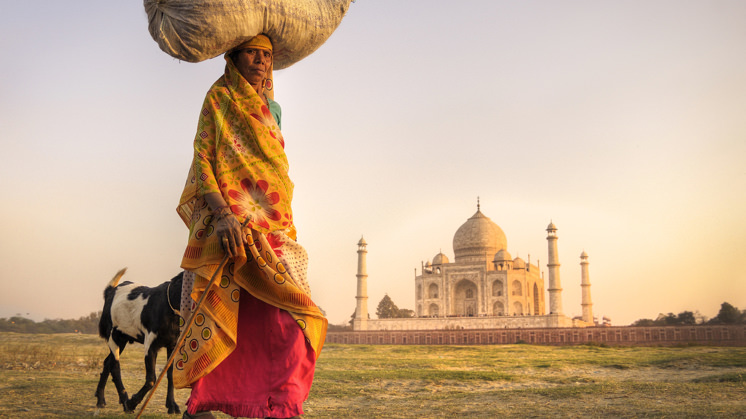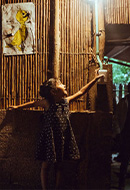Human Development Index
What is the Human Development Index and why has it fallen for the first time since 1990?
Society Social transformation Social action
After three consecutive decades of economic, educational and health advances, the world has taken a step backwards in 2020 because of the COVID-19 pandemic. This has been announced by the United Nations Development Programme (UNDP), which has been compiling the Human Development Index (HDI) since 1990. In 2024, we are still trying to recover from the shock of the pandemic.

One of the many consequences of the SARS-CoV-2 coronavirus does not directly affect any vital organ, but it does affect people's future: the setback in human development. Coronavirus took at least 15 million lives worldwide and time spent in isolation, caring for others and not going to school, none of which can be recovered.
The numbers from the United Nations Development Programme (UNDP) report in 2020 showed that COVID-19 left the population in deep uncertainty about the future after the pandemic. This was the first time the Human Development Index had declined and there have been multiple efforts to put it back on track since then. All the member countries of the Organisation for Economic Co-operation and Development have recovered from the damage of the pandemic – they reached their pre-2020 Human Development Index values – while 51% of the least developed countries have not been able to recover.
‘Why are we so far behind and how can we get unstuck without resorting to violence or isolationism?’ These two questions form part of the introduction to the Human Development Report 2023-24 and are the focus of the report.
What is the United Nations Development Programme (UNDP)
This United Nations (UN) agency is made up of experts who help countries implement integrated and lasting solutions for the planet and its inhabitants. The UNDP addresses issues essential to the development of humanity such as the eradication of poverty, inequality or the impacts of climate change, which is why coronavirus has affected its aspirations, as reflected in the announced fall in the Human Development Index for the first time since its creation in 1990.
In 2020 some of UNDP's sustainable development plans to reverse the effects of the pandemic included bridging the digital divide, improving social protection, and safeguarding health services and jobs. In contrast to the disparities presented in the Human Development Report 2023-24, where the richest countries showed unprecedented development, where Switzerland, Iceland and Norway top the list, the poorest countries are below their pre-COVID-19 level of development, with the Central African Republic (CAR), South Sudan and Somalia lagging the furthest behind.
The figures have led the UNDP to emphasise this glaring inequality between countries, the disempowerment of people, violence and discrimination leading to stress, the need for funding for public goods and to lower the temperature of the planet, and to the polarisation between countries.
What is the Human Development Index (HDI)
The Human Development Index (HDI) is an indicator created by UNDP that has shown the degree of progress made by each country for the last three decades. While not exempt from criticism, this initiative by the Pakistani economist Mahbub ul Haq has become the benchmark for taking the pulse of the planet, since it provides a broad overview of the inequalities between regions.
The HDI is used to develop a global human development ranking  . This annual classification makes it possible, on the one hand, to follow the development of a country over time and, on the other, to compare its situation with that of other countries. In this way, governments can better understand their growth options and international aid can be allocated judiciously.
. This annual classification makes it possible, on the one hand, to follow the development of a country over time and, on the other, to compare its situation with that of other countries. In this way, governments can better understand their growth options and international aid can be allocated judiciously.
Human Development Index (HDI) in the world
Sources: PNUD, Eustat, Datos Macro, Worldbank
SEE INFOGRAPHIC: The Human Development Index (HDI) in the world [PDF]
What does the HDI measure
This composite index takes into account health, education and economic factors in order to measure a country's human development, as opposed to previous methodologies that were focused purely on economics. Next, we review the variables that the HDI measures:
How is the HDI measured
The HDI is the geometric mean of the three dimensions above, with indices calculated separately for each country using data on life expectancy, schooling and per capita income. The final result always gives a value between 0 and 1 which defines, according to the UNDP, the four degrees of human development detailed below:
- Very high: countries with a HDI above 0.80.
- High: countries with a HDI between 0.70 and 0.80.
- Medium: countries with a HDI between 0.55 and 0.70.
- Low: countries with a HDI below 0.55.
However, as the UNDP recognizes, the HDI alone is not sufficient to measure a country's level of progress since it focuses on specific aspects, while human development is a much broader concept that requires other additional indicators.
HDI: Indicators
The Human Development Index is not the only index used by UNDP to measure a country's progress. There are other important ones alongside this indicator:
- HDI adjusted for Inequality (HDI-I). A form of the HDI that takes into account inequality between people. In other words, the HDI-I would show actual human development and the HDI would show the potential that could be achieved if there were no inequalities.
- Gender Inequality Index (GII). This reflects women's economic and social discrimination in three ways: reproductive health, empowerment and employment participation.
- Multidimensional Poverty Index (MPI). It evaluates the deprivation of households and their members in the areas of health, education and living standards.

'Electricity for all' programme
Iberdrola's response to the call to extend universal access to modern forms of energy.

We are investing to create a new model for electrification support projects
We work on the development of industrial initiatives with high growth potential.

Creating value for society
We seek to strengthen the initiatives that make up our social dividend.

Find out about the Iberdrola Group's foundations
We promote social initiatives that are committed to economic, social, and cultural development.







